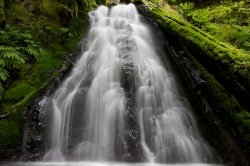Hi all,
Excuse my noobness but I'm new to digital photography. I've been been trying to get that "misty" effect when shooting waterfalls by using a long exposure time. However, when I try it out I end up with shots that are harshly overexposed. Here are a few examples:

25mm, f/25, 1" s, iso 100

18mm, f/18, 1"s, iso 100
Does anyone have any tips on how I can achieve the effect properly?
Thanks in advance.
Excuse my noobness but I'm new to digital photography. I've been been trying to get that "misty" effect when shooting waterfalls by using a long exposure time. However, when I try it out I end up with shots that are harshly overexposed. Here are a few examples:

25mm, f/25, 1" s, iso 100

18mm, f/18, 1"s, iso 100
Does anyone have any tips on how I can achieve the effect properly?
Thanks in advance.


